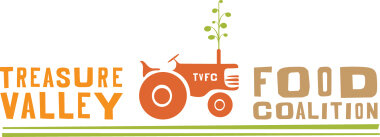Historical
In our effort to support a vibrant local food economy, the question must be asked: Can we grow more of what we eat? Is it possible that we could grow 20% of our food instead of the 2% that we do now? Part of the answer lies in our rich agricultural history. This page of resources may provide a look into our past and insight into our future.
Emmett Valley 1941, photographer Russell Lee, Library of Congress Collection
Food processing infrastructure around the region in 1953. It is difficult to learn the details of these important pieces of agricultural infrastructure, such as what crops they handled, how many people were employed, and where the final product ended up. But what is remarkable is the proximity of these to the farms that grew the crops. If farms have processing options that are nearby, farmers have more options in their crop rotation. Today, a map of the northwest pinpointing food processing plants would be very different—just a few plants. The infrastructure of today is either of enormous scale with hundreds of employees or very small serving the needs of a few farmers.
Canning & Creameries
Meat & Flour Processing
A look at Idaho’s agriculture in 1950 and 2007. The Census of Agriculture, conducted every 5 years, provides historical insights into commercial production levels. This document, comparing information from the 1950 census and the most recent one in 2007, echos a trend seen everywhere in American agriculture. A few crops dominate the acreage, but they are being produced with fewer farmers. Most crops show a precipitous decline in acreage and farmers. Processing plays an enormous role in the crops that are grown in any particular area.

